5.3 Gramática: SER vs. ESTAR (To be or not to be)
5.3 Gramática: SER vs. ESTAR (To be or not to be. . . )
A. USES OF SER. To help you remember the uses of the verb SER use the following acronym.
D.O.C.T.O.R.E
Date/ day
Origin/Nationality
Characteristic / description
Time
Occupation / Profession
Relationships/Ownership
Event
Ejemplos:
- Date/ day: It is used to express the date and days of the week.
Hoy es el primero de abril. Today is April 1st.
Mañana es jueves. Tomorrow is Thursday. - Origin/Nationality: Indicates origin and describes nationalities.
Ella es de Perú. She is from Peru.
Ella es peruana. She is Peruvian. - Characteristics: Describes essential qualities.
Ella es inteligente. She is smart.
Ellos son simpáticos. They are nice. - Time: is used to express time.
El vuelo es a las siete de la noche. The flight is at 7pm.
Son las cinco y media de la tarde. It is five-thirty in the afternoon. - Occupation/Profession: Describes professions or trades.
Ella es auxiliar de vuelo. She is a flight attendant.
Yo soy enfermera. I am a nurse. - Relationships/Ownership: indicates relationships and ownership.
Gloria es mi sobrina. Gloria is my niece.
Estas son mis maletas. These are my suitcases. - Event: Indicates where an event is taking place.
La fiesta es en mi casa. The party is at my house.
B. USES OF ESTAR. To help you remember the uses of the verb ESTAR use the following acronym.
L.A.C.E. (“tion words”)
L ocation (things and people)
A ction
C ondition
E motion
- Location: expresses where places, people, or things are located:
Estoy en la clase de español I am in the Spanish class.
¿Dónde está el baño? Where is the bathroom?
- Action: expresses the progressive tenses (action in progress).
Estoy hablando con el doctor I am talking to the doctor.
¿Qué estás haciendo? What are you doing?
- Condition: expresses health and other changeable states.
¿Cómo estás? How are you?
Estoy muy enferma. I am very sick.
- Emotion: expresses emotions.
Estoy contenta hoy. I am happy today.
Ser and Estar with adjectives
There are some adjectives that change in meaning when used with SER and ESTAR.
ser aburrido to be boring estar aburrido to be bored
ser bueno to be good estar bueno to be tasty/attractive
ser cansado to be a tiring person estar cansado to be tired
ser listo to be clever estar listo to be ready
ser malo to be bad estar malo to be ill
ser orgulloso to be conceited or vain estar orgulloso to be proud
ser moreno to be dark-skinned estar moreno to be tanned
ser pesado to be heavy/to be boring estar pesado to be annoying
ser rico to be rich estar rico to be tasty
ser seguro to be confident estar seguro to be sure
ser verde to be green estar verde to be unripe
ser viejo to be old estar viejo to look old
 ACTIVIDAD # 1
ACTIVIDAD # 1
Selecciona. Choose the right form of the verb SER o ESTAR.
- Diego ( es, está ) de Madrid pero ahora ( es, está ) estudiando en California.
- El concierto ( es, está ) mañana. Los músicos ( son, están ) mexicanos.
- Yo no puedo tomar ese café porque ( es, está ) frío y la taza (cup) ( es, está ) sucia.
- Paco y Ana ( son, están ) novios. Ellos ( son, están ) muy enamorados.
- La boda (wedding) ( es, está ) en junio, en la iglesia que (es, está) en Phoenix.
- El coche nuevo ( es, está ) de Luis (es, está ) un BMW, ¿verdad?
- Mi hermana ( es, está ) hipocondriaca. Siempre (es , está) enferma.
- ¿Qué hora ( es, está )? No sé. Mi reloj ( es , está ) roto (broken).
- Tú y yo ( somos, estamos ) nerviosos porque los exámenes ( son , están ) difíciles.
- Nunca ( soy, estoy ) aburrida en clase porque el profesor ( es , está ) dinámico.
¡Inténtalo!
 ACTIVIDAD # 2
ACTIVIDAD # 2
¿SER o ESTAR? Decide if ser or estar verb is appropriate for each sentence, then conjugate to fill the blank and complete the sentence.
- ¿_______tú de los Estados Unidos?
- Yo ______ puertorriqueña.
- Mi teléfono ______ en mi mochila.
- Mi mamá ____ enfermera (nurse) en un hospital y siempre _____ muy cansada.
- Disculpe, ¿Dónde _____la estación de tren?
- Yo _____ muy contento porque entiendo la diferencia entre Ser y Estar.
¡Inténtalo!
 ACTIVIDAD # 3
ACTIVIDAD # 3
Preguntas personales. Answer the following personal questions using ser and estar.
- ¿Cómo estás hoy?
- ¿Cómo eres?
- ¿Eres reservado(a) o extrovertido(a)?
- ¿Estás muy ocupado(a) en este momento?
- ¿De dónde es tu familia?
- ¿Dónde estás ahora (now)?
 ACTIVIDAD # 4 Pair-Share
ACTIVIDAD # 4 Pair-Share
Traducción. Using the verbs SER or ESTAR. Translate the following paragraph into Spanish.
How would you describe Alberto to a Spanish-speaking friend?
Alberto is a handsome young man. He’s not an American; he is from Chile, but now he’s in Tempe. His father is a professor, and his mother is a doctor. He’s not married, but he has a girlfriend. Alberto studies at Arizona State University and he likes his classes. Today he’s at home (en casa) because he is very sick. He is probably very bored and he is watching t.v. or talking on the phone with his girlfriend.
 ACTIVIDAD # 5
ACTIVIDAD # 5
Pasatiempos. Con un compañero describan las personas en estas imágenes. The descriptions should respond to the following questions (be creative!):
| 1. ¿Quiénes son?
2. ¿Dónde están? 3. ¿Qué están haciendo? 4. ¿Cómo están? (cómo se sienten) |
5. ¿De dónde son?
6. ¿Cuál es su profesión? 7. ¿Quién está de vacaciones? 8. ¿Qué tiempo hace? |
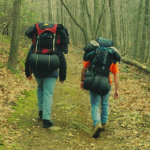

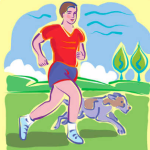
1 2 3
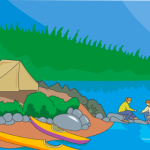

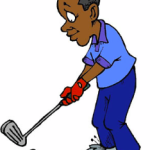
4 5 6
 ACTIVIDAD # 6
ACTIVIDAD # 6
¿Quién soy? Using the verbs SER and ESTAR, share the following information about yourself.
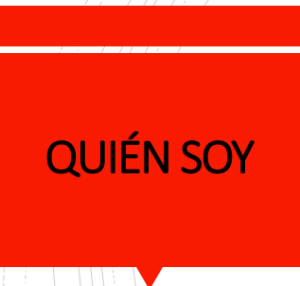 |
|

